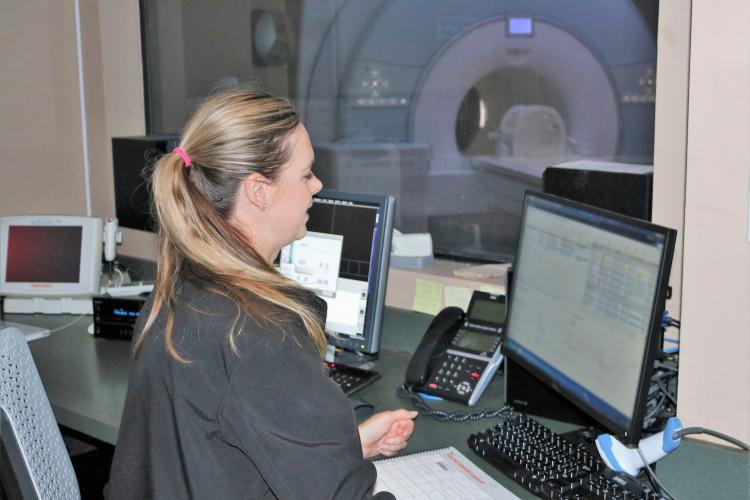
JPS Health Network patients will soon see much shorter waits when they need to get an MRI scan.
Work has begun to add a third magnetic resonance imaging machine to the health network’s current stable of two, according to JPS Executive Director of Imaging Services Michael Dossey.
“When the new machine is installed, current wait times of 3-6 weeks for outpatients and 2-3 days for inpatients will be greatly reduced” said Dossey. “We’ve gotten to the point where the volume of patients we serve has surpassed our capacity. The whole idea behind installing a new machine is to increase patients’ access to care.”
Long on the Radiology department’s wish list, there is still a little more waiting to be done before the new equipment can be plugged in and switched on. MRI machines are massive, and the new one weighs more than 16,000 pounds. In order to make room for the new one, a mechanical room on the first floor of the JPS main building will have to be emptied of its contents which then must be relocated elsewhere. Once the space is cleared and reconfigured to accommodate its new purpose, construction workers will have to get creative – and destructive. No door is big enough to accommodate the device. So, a big hole will have to be opened up in a brick wall so the new MRI can be hoisted through it with a crane.
Danny Sheriff, manager of specialty imaging at JPS, estimated that construction will take about six months and the new MRI is expected to become operational sometime in the late spring. The total price of the project is expected to be about $3 million.
What is an MRI?
It’s a big magnet capable of more than 1,000 times the pulling power of the ones holding your kids’ drawings to your kitchen refrigerator. Most of your body is composed of water, and water is made up of hydrogen and oxygen molecules. Hydrogen protons in the water of the body’s cells spin when subjected to a strong magnetic field. As the protons slow back down, they produce a radio frequency that can be picked up and converted into an image. Protons in different types of tissue slow at different rates and that creates contrast which makes it possible to produce an image showing the different tissues of the body in great detail.
MRI scans can detect damage to ligaments, joints, cartilage, tendons and the spinal cord. They can also spot tumors or be used to detect evidence of strokes, multiple sclerosis and to diagnose other diseases or injuries. The whole process is painless and usually takes 45 minutes to an hour.
While in the past some people have been reluctant to have an MRI scan because the machines can be claustrophobic, the MRI that will be installed looks like a donut stood on its end that the patient passes through as opposed to the long, enclosed, bed-like scanners of the past.
